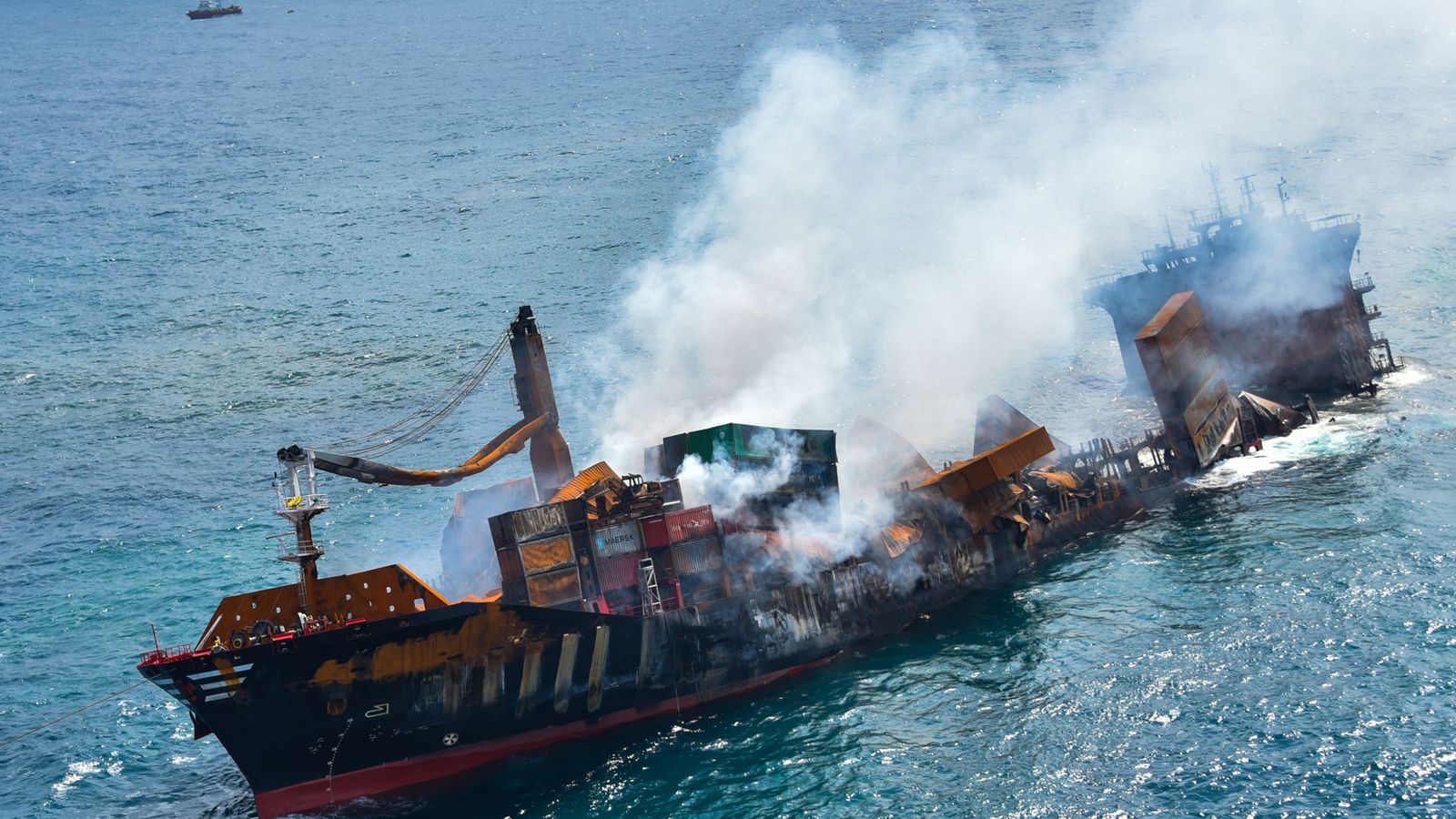North Sea Environmental Disaster Looms: What's Behind The Fiery Collision?
The North Sea, a vital shipping lane and oil-producing region, has been shaken to its core by a catastrophic collision between two tankers. The incident, which occurred on March 16, 2023, has raised serious concerns about the environmental impact and the potential consequences for the region's ecosystem. In this article, we'll delve into the details of the collision, its causes, and the measures being taken to mitigate the damage.
The North Sea has long been a hub for maritime trade and oil production, with numerous tankers and cargo vessels passing through its waters daily. The region's unique geography, with its deep waters and strong currents, makes it a challenging and potentially hazardous environment for ships to navigate. However, the North Sea has also been plagued by a series of accidents and incidents in recent years, highlighting the need for increased safety measures and more stringent regulations.
The collision between the two tankers, a Liberian-flagged vessel and a Turkish-flagged ship, is believed to have occurred in the central North Sea, approximately 100 miles off the coast of Norway. The incident involved a combination of human error and mechanical failure, with the Liberian tanker reportedly running aground and the Turkish vessel striking it with significant force. The resulting fire, which was visible from several miles away, has raised concerns about the potential environmental impact of the collision.
The Causes of the Collision
Several factors contributed to the collision, including inadequate navigation and communication, as well as a series of design and safety flaws in the vessels involved. The Liberian tanker, which was carrying a cargo of light crude oil, was traveling at a speed of approximately 20 knots when it ran aground in a designated shipping lane. The Turkish vessel, which was en route from Turkey to the UK, was traveling at a speed of around 25 knots when it struck the Liberian tanker.
The International Maritime Organization (IMO) has identified several key factors that contributed to the collision, including inadequate navigation, poor communication, and a lack of effective safety measures. The IMO has called for improved safety protocols and increased cooperation between shipping companies, regulatory bodies, and port authorities to prevent similar incidents in the future.
Human Error and Communication Failures
Human error and communication failures played a significant role in the collision. The Liberian tanker's crew failed to maintain a safe distance from the vessel ahead, and the Turkish crew was reportedly not adequately informed about the presence of the Liberian tanker in the shipping lane. This lack of communication and situational awareness led to a series of critical errors, ultimately resulting in the collision.
The Environmental Impact
The collision has raised serious concerns about the potential environmental impact of the incident. The Liberian tanker was carrying a cargo of light crude oil, which has a relatively low viscosity and is less likely to spread quickly across the surface of the water. However, the oil can still pose a significant risk to the region's ecosystem, particularly if it comes into contact with the ocean's microorganisms.
The IMO has warned that the incident could have significant consequences for the North Sea's ecosystem, including the disruption of marine life and the degradation of habitats. The organization has called for immediate action to contain the spill and mitigate the damage to the environment.
Oil Spill Containment and Cleanup
The cleanup efforts are currently underway, with a team of experts from the IMO and the European Union's Environmental Protection Agency (EPA) working to contain the spill and prevent it from spreading further. The team is using a combination of booms, skimmers, and dispersants to mitigate the damage and minimize the environmental impact.
Regulatory Response
The regulatory response to the incident has been swift and decisive, with several organizations and governments taking action to address the concerns raised by the collision. The IMO has issued a statement condemning the incident and calling for improved safety measures and increased cooperation between shipping companies and regulatory bodies.
International Cooperation and Regulation
The incident highlights the need for increased international cooperation and regulation in the maritime industry. The IMO has been working to develop new safety protocols and regulations aimed at preventing similar incidents in the future. The organization has also called for greater transparency and accountability among shipping companies and regulatory bodies.
Mitigation Measures and Prevention Strategies
Several measures are being taken to mitigate the damage and prevent similar incidents in the future. The IMO has established a working group to develop new safety protocols and regulations aimed at preventing collisions and reducing the environmental impact of maritime accidents.
Design and Safety Flaws
The incident has highlighted several design and safety flaws in the vessels involved, including inadequate navigation and communication systems. The IMO has called for improved safety measures, including the use of advanced navigation systems and improved communication protocols.
Conclusion
The North Sea environmental disaster is a wake-up call for the maritime industry, highlighting the need for improved safety measures and increased cooperation between shipping companies, regulatory bodies, and port authorities. The incident serves as a reminder of the importance of prioritizing environmental protection and taking proactive measures to prevent similar incidents in the future.
Recommendations for the Future
Several recommendations have been made to prevent similar incidents in the future, including:
- Improved safety protocols and regulations
- Increased cooperation between shipping companies and regulatory bodies
- Enhanced navigation and communication systems
- Improved training and education for maritime personnel
- Greater transparency and accountability among shipping companies and regulatory bodies
By implementing these measures, we can reduce the risk of similar incidents and protect the environment for future generations.
Christian Keyes Father
Demet Zdemir
King Von Autopsy Back
Article Recommendations
- Billieilish Y
- Aaron Hernandezaughter 2024
- Matthew Labyorteaux Net Worth
- Zhao Lusi Age
- Matthew Gray Gubler
- Diddy And Beyonce
- Aishah
- Nikki Catsouraseathxplained
- Beatrice Minns
- 2 Actorsied Yesterday



